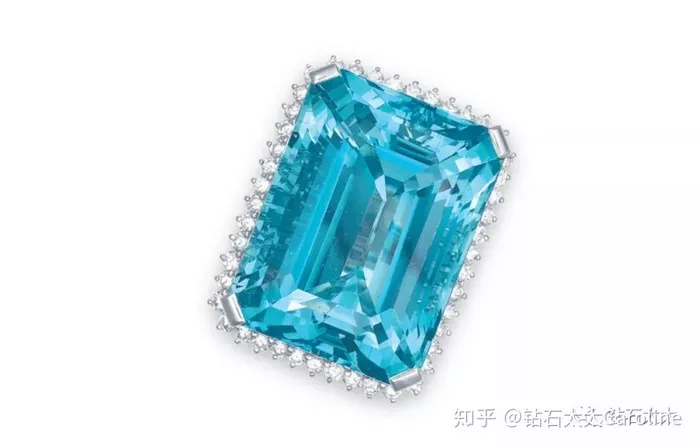From the depths of the ocean to the rugged terrains of the Earth’s crust, the aquamarine gemstone holds a captivating allure that has fascinated humanity for centuries. Renowned for its serene blue hues reminiscent of crystalline waters, aquamarine stands as a symbol of purity, tranquility, and eternal youth. Yet, despite its widespread appreciation, the origins of this mesmerizing gem remain shrouded in mystery and intrigue.
In this comprehensive exploration, we embark on a journey to uncover the elusive sources of aquamarine, tracing its geological formations, mining locales, and famous aquamarines across the globe. Delving deep into the Earth’s geological tapestry, we unveil the hidden treasures that give birth to one of nature’s most enchanting creations.
The Geological Genesis:
Aquamarine, a variety of the mineral beryl, owes its exquisite coloration to traces of iron in its crystal lattice structure. Formed through the interplay of geological processes spanning millions of years, the journey of aquamarine begins in the depths of the Earth’s mantle.
Primarily sourced from igneous and metamorphic rocks, aquamarine undergoes a complex genesis that involves the crystallization of beryl-rich magma under extreme temperature and pressure conditions. As the molten rock slowly cools and solidifies, beryl crystals begin to form, incorporating iron impurities that infuse the gemstone with its characteristic blue hue.
Over eons, geological upheavals and tectonic movements thrust these nascent aquamarine crystals upwards towards the Earth’s surface. The relentless forces of nature, including volcanic activity and mountain-building processes, play a pivotal role in shaping the topography and geology of regions where aquamarine deposits are found.
Global Gemstone Hotspots:
While aquamarine can be found scattered across various continents, certain regions have emerged as veritable hotspots for this coveted gemstone. From the rugged landscapes of South America to the remote reaches of Africa and beyond, these locales offer a glimpse into the geological wonders that harbor aquamarine treasures.
Brazil: Land of Aquamarine Abundance
Nestled within the verdant embrace of Brazil’s mineral-rich terrain lies one of the world’s foremost sources of aquamarine. The Brazilian state of Minas Gerais, renowned for its prolific gemstone deposits, boasts a kaleidoscope of aquamarine hues ranging from pale sky blues to deep cerulean tones.
The renowned mines of Minas Gerais, including the Santa Maria de Itabira and Pedra Azul, have yielded some of the largest and most exquisite aquamarine specimens ever unearthed. Here, miners navigate labyrinthine tunnels and precarious shafts in pursuit of the elusive gemstone, often facing formidable challenges posed by the region’s rugged topography and unpredictable weather.
The Aquamarine Enigma of Africa
Across the African continent, a mosaic of geological wonders conceals pockets of aquamarine riches waiting to be discovered. Countries such as Nigeria, Madagascar, and Zambia are celebrated for their contributions to the global aquamarine trade, each offering unique insights into the gemstone’s geological origins.
In Nigeria’s rugged Jos Plateau, artisanal miners delve into the earth’s crust in search of aquamarine veins nestled amidst granite intrusions. Meanwhile, the island nation of Madagascar unveils a treasure trove of aquamarine specimens, with deposits scattered across its diverse landscapes, from lush rainforests to arid savannas.
Aquamarine Across Continents: From Asia to the Americas
Beyond the realms of South America and Africa, aquamarine exerts its mesmerizing influence across a diverse array of geological settings. In Asia, the mountainous terrain of Pakistan’s Gilgit-Baltistan region harbors aquamarine deposits ensconced within rugged valleys and towering peaks.
Similarly, the United States boasts its own share of aquamarine reserves, with notable occurrences in states such as Colorado, California, and North Carolina. Here, lapidary enthusiasts and amateur prospectors alike scour riverbeds and mountain slopes in pursuit of the elusive gemstone, drawn by its ethereal beauty and intrinsic value.
Mining and Extraction:
The extraction of aquamarine involves various methods tailored to the geological characteristics of its deposits. Open-pit mining stands as the primary approach for accessing aquamarine reserves, particularly in regions where the gemstone is embedded within surface layers of rock and sediment. Additionally, underground mining is employed in instances where aquamarine deposits extend deep below the Earth’s surface, requiring more extensive excavation efforts.
Given its status as a relatively common gemstone, aquamarine enjoys accessibility for both mining operations and prospective purchasers. This accessibility contributes to its widespread availability in the jewelry market and enables enthusiasts to acquire aquamarine pieces with relative ease.
Notable Examples:
Several famous aquamarines have garnered acclaim for their exceptional size, quality, and historical significance. Among these notable examples are:
Dom Pedro: Regarded as the world’s largest aquamarine, this impressive specimen was discovered in Brazil and showcases the gemstone’s captivating beauty on a grand scale.
Roosevelt Aquamarine: Named in honor of President Franklin D. Roosevelt, this renowned aquamarine serves as a symbol of strength and resilience, embodying the enduring allure of the gemstone.
Hirsch Aquamarine: Revered for its exquisite craftsmanship and exquisite coloration, the Hirsch Aquamarine exemplifies the pinnacle of aquamarine jewelry design and artistry.
Queen Elizabeth’s Tiara: Adorned with precious aquamarines, Queen Elizabeth’s Tiara embodies regal elegance and timeless sophistication, highlighting the gemstone’s enduring appeal among royalty and nobility.
Meghan Markle’s Ring: Featuring a stunning aquamarine center stone, Meghan Markle’s engagement ring captivates with its understated elegance and contemporary charm, sparking renewed interest in the gemstone among modern brides-to-be.
Schlumberger Bow: Designed by renowned jeweler Jean Schlumberger, the Schlumberger Bow brooch showcases aquamarines in a whimsical and enchanting arrangement, epitomizing the gemstone’s versatility and allure in haute couture jewelry.
Yet, the pursuit of aquamarine is not without its ethical and environmental considerations. Concerns regarding fair labor practices, environmental degradation, and resource depletion underscore the need for sustainable approaches to mining and extraction. Initiatives aimed at promoting responsible sourcing, community development, and ecosystem conservation are increasingly gaining traction within the gemstone industry, reflecting a growing awareness of the interconnectedness between human activities and the natural world.


